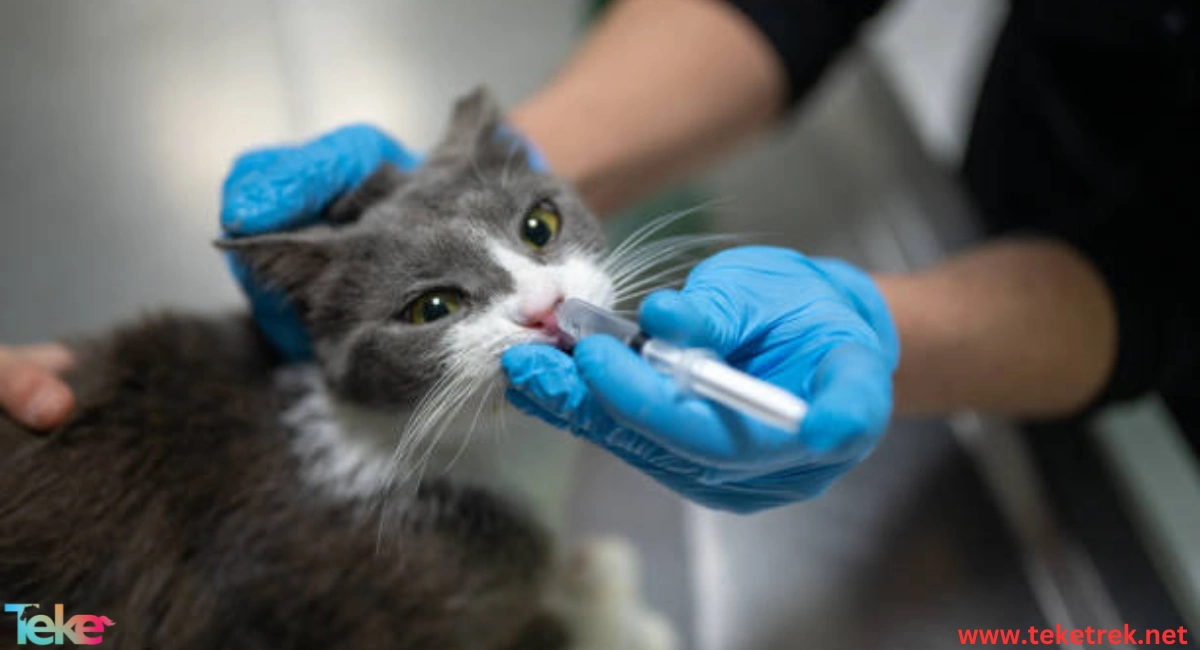Dental and oral diseases in cats represent a common health issue that can significantly affect their quality of life. In the wild, cats naturally cleaned their teeth by chewing on raw bones or grass, which helped maintain oral health. However, as domestic pets, house cats can no longer do this in the same way. Therefore, it becomes essential for cat owners to take preventive measures to maintain their cats’ oral health. Providing proper care and regularly cleaning their teeth can help reduce the risk of gum diseases and dental problems.
Let’s learn more about it from teketrek.
Dental and Oral Diseases in Cats
The oral and dental health of cats is a vital aspect of their overall well-being.
Many cats suffer from several issues, such as:
- Plaque: An invisible layer at first, which thickens over time, forming a soft gray or white coating on the surface of the teeth.
- Tartar: A result of plaque buildup, visible to the eye, appearing yellow to brown. The accumulation of tartar and bacteria on the teeth and gums leads to gingivitis, characterized by redness and swelling of the gums.
- Tooth decay: A common issue caused by these factors, requiring attention and care to maintain oral health.

How to Care for Cats’ Teeth
Taking care of your cat’s teeth is an essential part of pet care, playing a crucial role in maintaining their overall health and well-being.
Like humans, cats need regular dental cleaning to avoid plaque and tartar buildup. The following methods can help maintain their dental health:
- Brush your cat’s teeth at least two to three times weekly to ensure oral hygiene.
- Schedule regular visits to the vet every six months to a year to check dental health.
- Provide specialized dental care food. Some brands, like Royal Canin, offer dry food designed to support adult cats’ oral health. While not mandatory, this step can be beneficial in enhancing dental care.
How to Brush Cats’ Teeth
To start the dental care process, gently hold your cat and wipe their mouth while massaging their face and cheeks softly. Offer treats to reinforce positive behavior. If the cat resists, avoid treats or touching them and try again later.
If the cat accepts this step, proceed to touch their teeth and gums with your fingers. If they show no resistance, wrap a soft, damp gauze around your finger and gently rub it along their teeth. This step may require several sessions. Always offer treats, but stop immediately if they resist and schedule another attempt later. Once your cat accepts the gauze, you can introduce cat-specific toothpaste, like Beaphar. Afterward, start using a cat toothbrush, handling them with care and calmness, and don’t forget to reward them for a positive experience.
Read more: Pet Care in Winter: Tips to Ensure Your Pet’s Health and Comfort During Cold Weather
Causes of Gingivitis in Cats
Plaque and tartar accumulation are the primary causes of gingivitis in both cats and dogs. The following factors may contribute to gingivitis in cats:
- Aging
- Crowded teeth
- Consuming soft foods
- Abnormal chewing habits
- Lack of oral hygiene (e.g., no brushing or cleaning)
- Diabetes
- Autoimmune diseases
- Feline leukemia virus
- Feline immunodeficiency virus
Read also: Bird species that migrate in winter: Discover the long paths and surprising adaptations
Best Toothpaste for Cats
We’ve selected two of the best cat toothpastes based on feedback from many cat owners:
- Arm & Hammer Toothpaste
Known for its effectiveness in eliminating bad breath and reducing tartar buildup, this toothpaste also whitens and brightens teeth. It features natural ingredients that support and nourish dental health and comes in a tuna flavor loved by many cats. - Beaphar Dental Toothpaste
Beaphar toothpaste offers three essential elements for cat and dog dental care: protection, prevention, and cleaning. It is enriched with natural chlorophyll extract, which combats bad breath, leaving a fresh scent and reducing tartar and plaque buildup.

FAQs
How do I know if my cat has an inflamed mouth?
Stomatitis refers to a general inflammation of the oral cavity such as the gums, tongue, lips, and roof of the mouth. Symptoms of inflamed mouth in cats include bad breath, excessive drooling, reduced appetite, and weight loss. If you observe these signs, it is important to consult a veterinarian for evaluation.
What are the symptoms of calicivirus in cats?
The symptoms associated with feline calicivirus include:
- Frequent sneezing
- Nasal discharge
- Ulcers on the nose
- Eye inflammation
- Eye discharge
If any of these symptoms are noticed, consulting a veterinarian for proper diagnosis and treatment is recommended.
The oral and dental health of cats is a crucial component of their well-being and quality of life. Understanding common oral diseases, such as gingivitis and tooth decay, can help cat owners take effective preventive measures. Regular care, such as brushing teeth and offering appropriate food, can reduce the risk of oral problems. Every cat owner should be aware of the importance of dental care and consult a veterinarian when needed.





